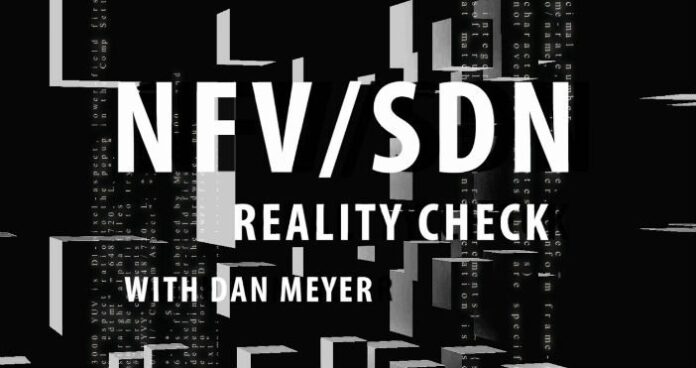Level 3 looks to NFV and SDN in move to bolster websites, applications; other NFV and SDN news of the week
Recent events around the launch of ticket sales for an upcoming moving that crashed the websites and applications of movie ticker brokers highlight the fragile nature of such platforms when it comes to handling short bursts of intense network traffic.
On this week’s NFV/SDN Reality Check, we spoke with Adam Saenger, VP of product development and management at Level 3, on how the firm is using virtualization technology like NFV and SDN to help bolster the robustness of websites and applications.
We also look at some of the top news stories of the past week, including CenturyLink signing a deal with Alcatel-Lucent’s Nuage Networks to provide the operator with networking functionality for its programmable services backbone network architecture.
CenturyLink said its PSB architecture is an open, software-enabled platform for delivering dedicated services using NFV technology to its enterprise customers. CenturyLink said the architecture uses NFV to place applications and services closer to the network edge to allow for quicker deployment, modification and scalability.
Nuage claims its virtualized services platform will allow CenturyLink to offer cloud control by unifying virtualized services in a single entity; the ability to “detect, debug and resolve problems” through a real-time inventory of virtual services, physical connectivity and “the correlation” between the issues; and through micro-segmentation capabilities allowing for protection against security breaches.
Also, Ericsson and Cisco Systems announced a global partnership tying together their platforms to target telecom operators and reportedly produce at least $1 billion in incremental revenue opportunities for each company beginning in 2018. The companies said the network support is to include “5G,” cloud, IP and the “Internet of Things,” and that Ericsson and Cisco will provide teams to jointly work on an initiative targeting SDN, NFV, and network management and control.
The partnership is said to offer a platform including routing, data center, networking, cloud, mobility, management and control, and tap their respective global footprints to create what they call the networks of the future. Financially, Cisco and Ericsson said they expect to generate incremental revenue beginning in 2016, ramping to more than $1 billion each in 2018. For Ericsson, some of the revenue will come from license fees generated from Cisco.
Make sure to check out next week’s NFV/SDN Reality Check when we again look at some of the top news stories of the week and speak with Ken Dilbeck, head of collaboration program at TM Forum, on the impact of open source impact on NFV and SDN deployments.
Bored? Why not follow me on Twitter

